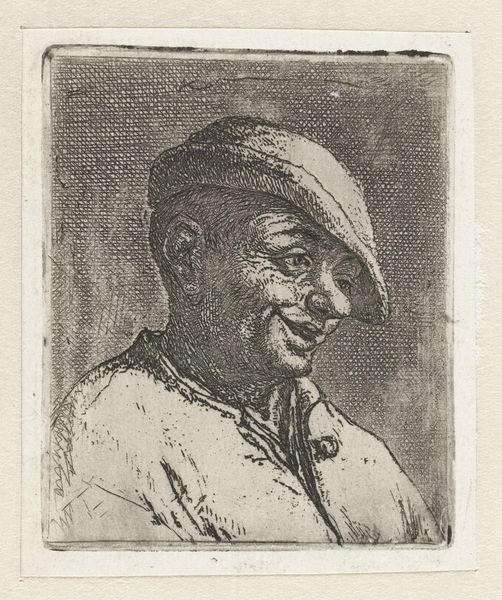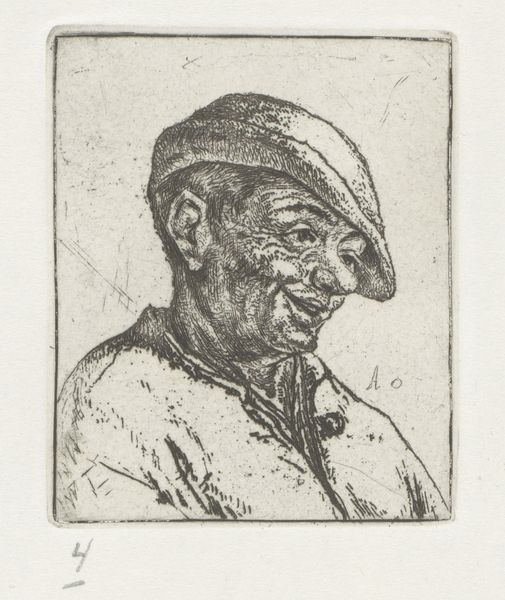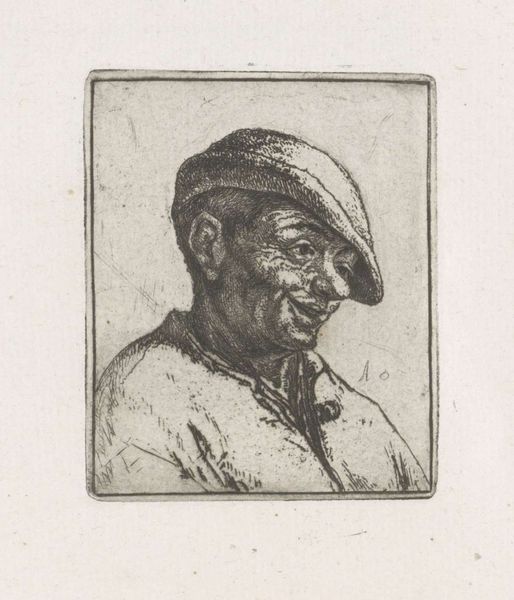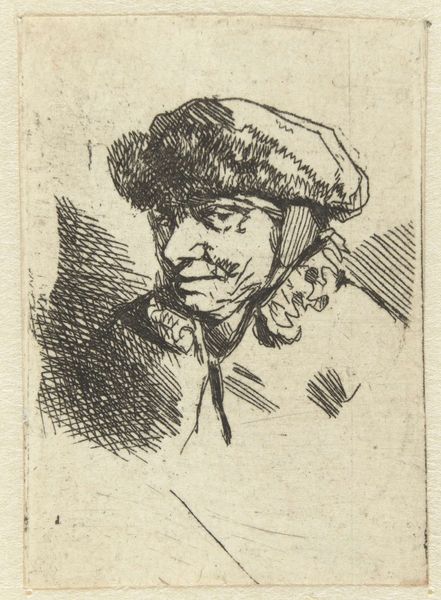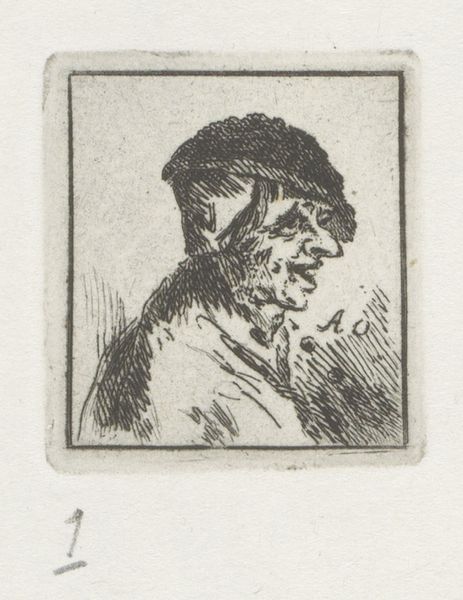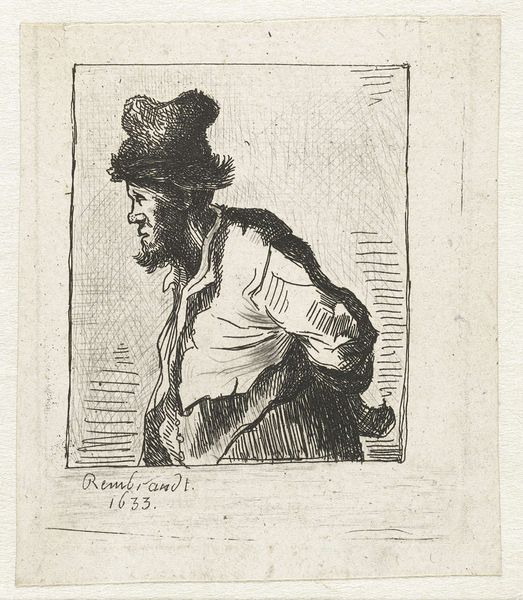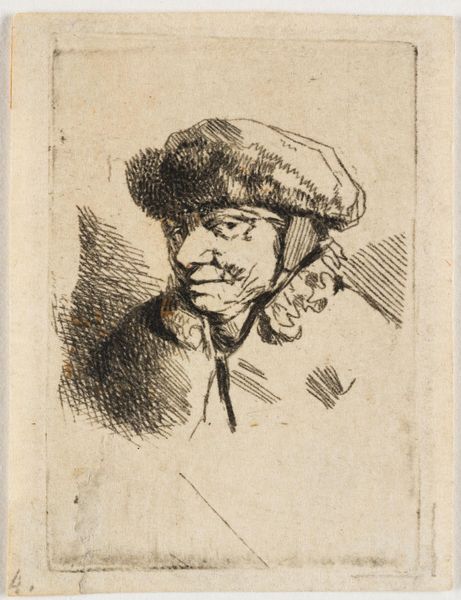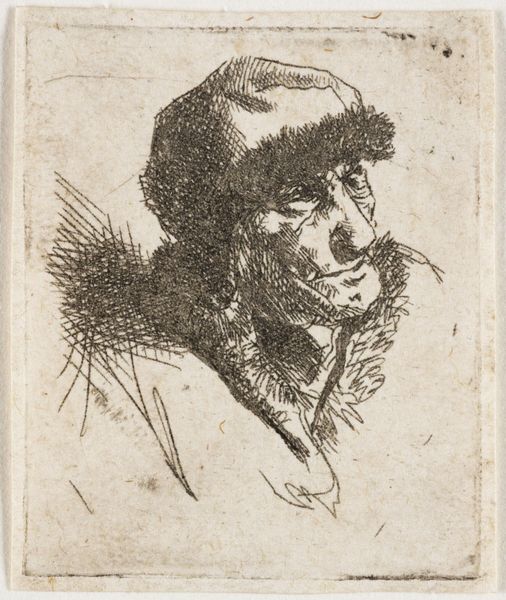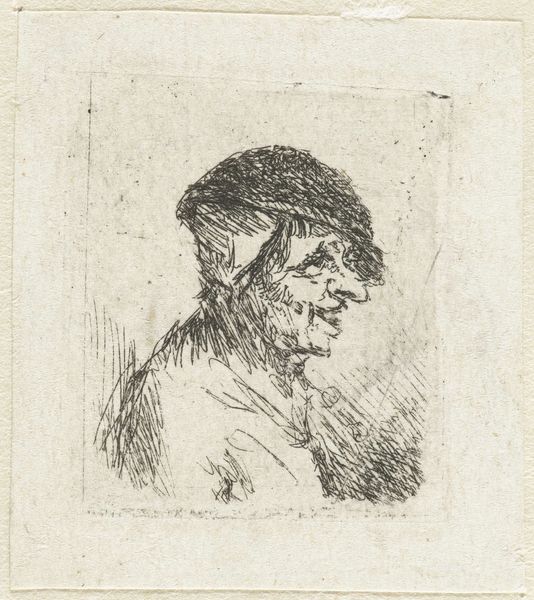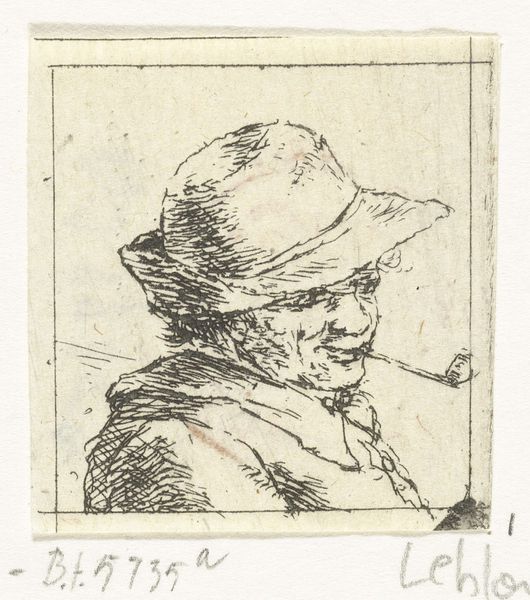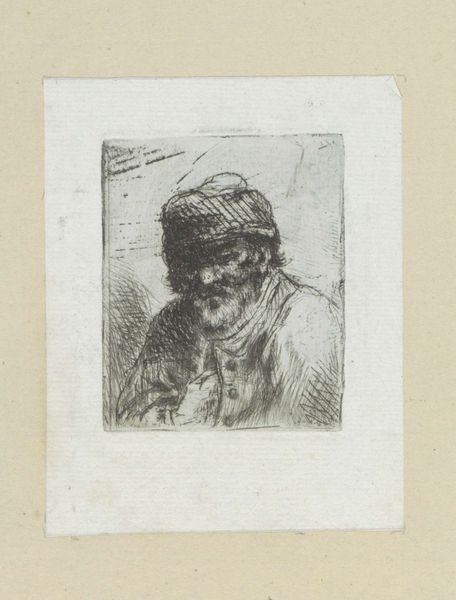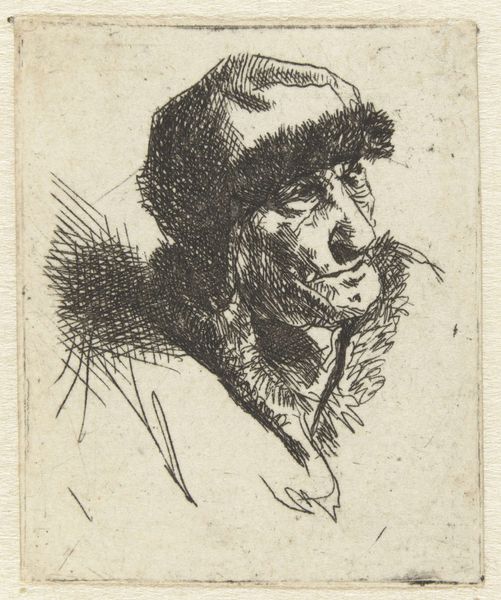
drawing, print, etching
#
portrait
#
drawing
#
toned paper
#
light pencil work
#
dutch-golden-age
# print
#
etching
#
pencil sketch
#
figuration
#
personal sketchbook
#
pencil drawing
#
ink drawing experimentation
#
pen-ink sketch
#
sketchbook drawing
#
portrait drawing
#
genre-painting
#
sketchbook art
Dimensions: height 72 mm, width 58 mm
Copyright: Rijks Museum: Open Domain
Adriaen van Ostade etched this “Bust of a Laughing Peasant” sometime in the 17th century. The most striking symbol here is the peasant's laughter, a motif with deep historical roots. Laughter, often associated with Dionysian revelry, signifies both liberation and potential chaos. Think of the Commedia dell'Arte characters, whose exaggerated expressions conveyed social commentary and critique. This peasant’s mirth echoes that spirit. Yet, it is also reminiscent of the medieval Feast of Fools, where societal hierarchies were temporarily overturned through jest and mockery. Consider how laughter has evolved: from the sacred rituals of ancient Greece to the subversive acts of carnival. It reflects our collective memory, resurfacing in art as a potent symbol of human emotion and social commentary. Here, Ostade captures laughter's ambivalent nature—a blend of joy, defiance, and perhaps, a touch of the unsettling. This etching reminds us of the cyclical nature of symbols, constantly renewed and reinterpreted through the ages.
Comments
No comments
Be the first to comment and join the conversation on the ultimate creative platform.

